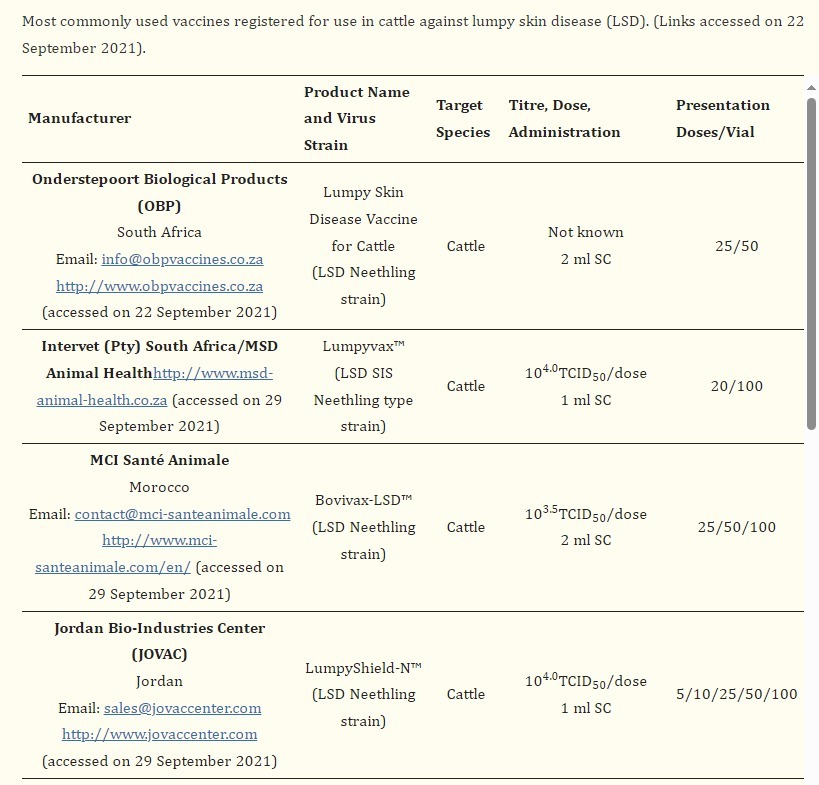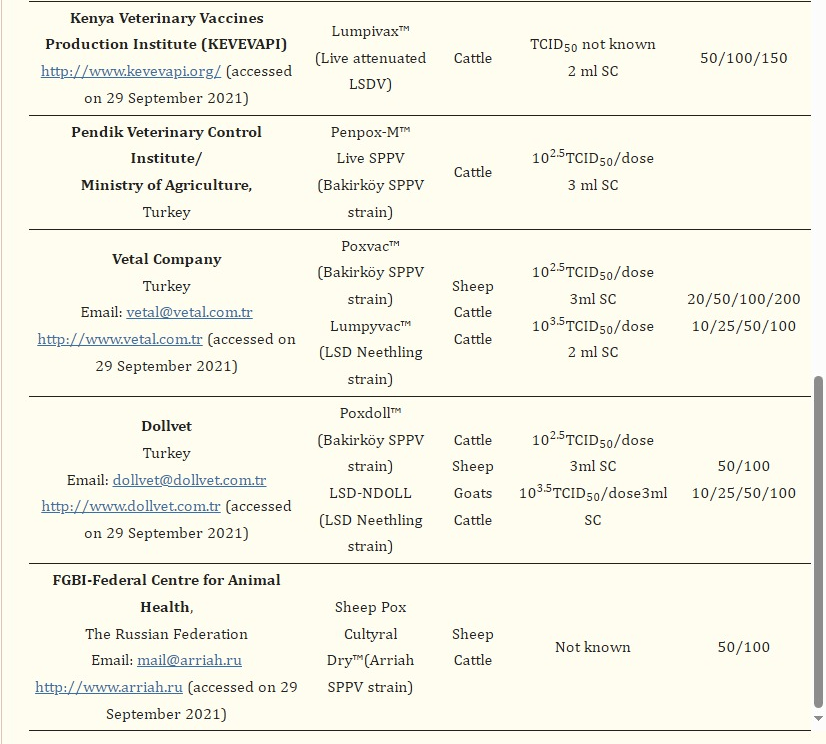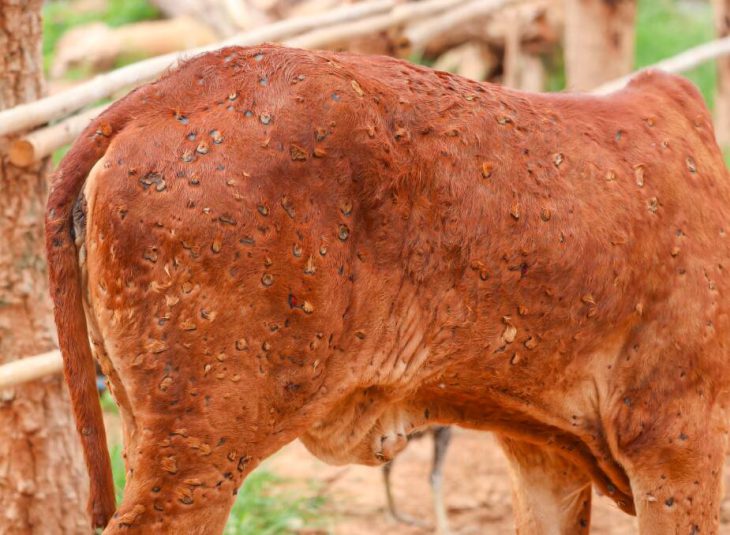Lampy skin disease (LSD) is a type of goat pox virus that is caused by insect bites in cattle. Skin disease is more common in summer and autumn when there are many mosquitoes and insects. This virus is scientifically known as Capripoxvirus from the Poxviridae family.
It was discovered in Southeast Africa in 1929 and then spread to other parts of the world. This viral disease in cattle shows itself as bumps on the skin. The disease causes excessive emaciation (due to unwillingness to eat), temporary or even permanent reduction of milk, reduction or loss of fertility in bulls and female abortions, as well as permanent damage to the skin. Biting insects, especially mosquitoes, play an important role in the transmission and spread of the disease. The virus is also present in semen up to 22 days after infection. Lumpy skin disease is not among the common diseases of humans and animals and is not transmitted to humans. Following this disease, up to 45% of the herd can get sick and up to 10% of the herd can die from the disease.
How to treat Lumpy skin disease:
- Calves are infected by eating cow’s milk.
- Contaminated cows have watery eyes and see.
- Cattle become infected through the saliva of infected cattle that come into contact with the water-eater.
- The clinical symptoms of Lumpy skin disease include:
- High fever (40 to 41 degrees Celsius)
- Anorexia and extreme thinness
- Decreased lactation and fertility
- Abortion
- Tears and feelings of nose and saliva
- Color symptoms such as cough and runny nose
- The appearance of specific skin nodules of 5 to 50 mm in size, which can be seen from a distance as spiky hair bundles.
Skin nodules that may cover the entire surface of the body appear spontaneously. These nodules can be found in any part of the body, but they can be seen mostly on the head and neck, between the perineum, breast and legs. These nodules have a diameter of 0.5 to 7 cm and are slightly raised and cover the entire thickness of the skin. Include
In the country of Iran, this viral disease of Lumpy Skin, which spreads in large livestock such as cattle, camels, was seen in the livestock of one of the livestock farmers of Pozgah village, Ganaveh city, and with the timely efforts of the stakeholders, the focus of this disease was contained and it was emphasized to prevent This disease, all the executive and law enforcement agencies should enter the arena.
In an article published in 2021, he described the available vaccines against LSD as follows:
Vaccination of cattle breeding areas and Asian buffaloes (Bubalus bubalis) is the most effective tool to prevent the spread of skin diseases (LSD) and minimize cattle losses due to disease outbreaks. This disease has prevented domestic cattle and buffalo production throughout the continent of Africa, the Middle East, the Balkans, the Caucasus, and the Russian Federation. The disease has reached some major cattle producing and trading countries across Asia, for example India, Republic of China, Myanmar, Bangladesh, Vietnam and recently between May and September in Cambodia, Malaysia, Mongolia.
To prevent the spread of the disease, there are vaccination campaigns, restrictions on cattle movement and trade, a practical policy, disinfection and vector control.
Most of the commercially available vaccines against LSD are live attenuated vaccines based on the LSDV strain, sheep diphtheria virus (SPPV) or goat diphtheria virus (GTPV). Likewise, the first inactivated vaccine has recently entered the market.
Homologous vaccines provide protection to cattle against virulent farm strains. LSDV vaccines contain either the well-known South African Neethling strain or, despite their confusing names, the KSGP O-240 and O-180 strains. Two so-called KSGP strains are used in cattle against LSD in countries such as Ethiopia, Israel and Egypt. Although the names of the strains refer to SPPV and GTPV, the true identity of the Kenyan sheep and goat strains (KSGP) and KS-1 has been shown to be an LSDV strain. It has been used with varying success in Turkey, the Russian Federation, parts of the North and the Caucasus region. The attenuated Yugoslavian SPPV RM65 strain vaccine was used in cattle in Israel and Jordan, while the Romanian SPPV strain was used in Egypt and Saudi Arabia.
Inactivated vaccines offer both advantages and disadvantages compared to attenuated vaccines. The most important safety advantage is inactivated vaccines. Their non-repetitive features prevent the vaccine virus from being transmitted to animals. Inactivated vaccines can be a safe preventive vaccine alternative at risk without the disease provider, provided that there is a sick cattle system and a health record of vaccination.


Complete elimination of LSD requires disease, transparency in information, coordinated policies and regional control, and viable surveillance programs in affected and at-risk areas, as well as human resources, funding, and laboratory testing. and the vaccine is available. Success in controlling the disease is highly dependent on the chosen strategy and oxidation, making LSD a challenging but achievable area. justify vaccination strategies, human and laboratory resources, and surveillance programs to prevent this disease.
Source:PubMed

Write Your Comment